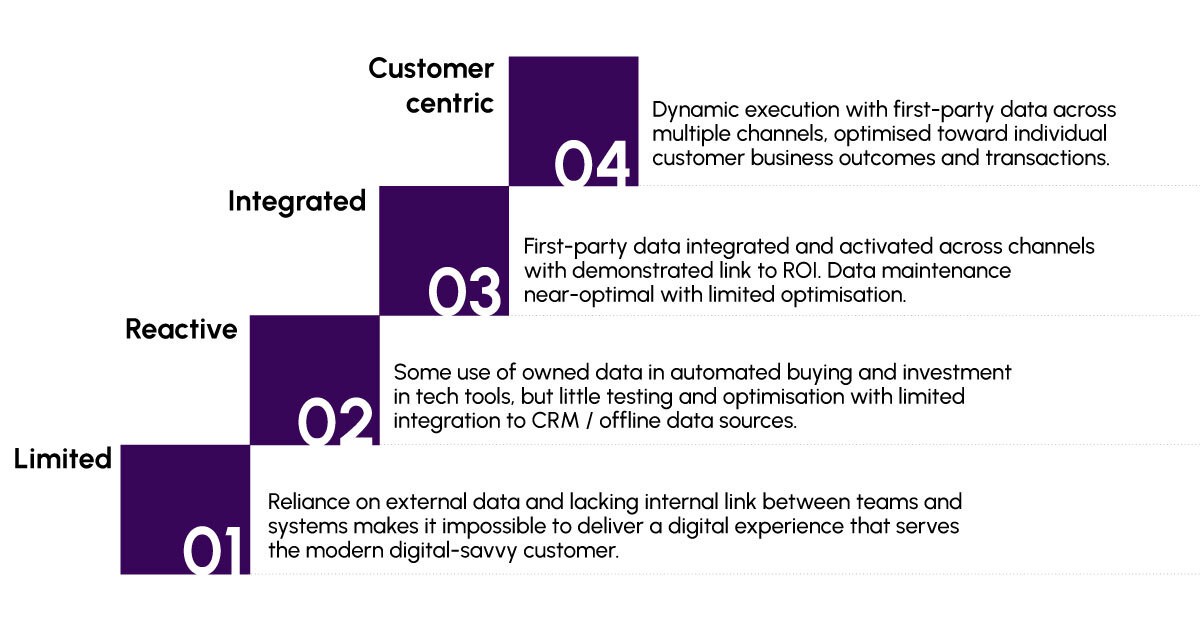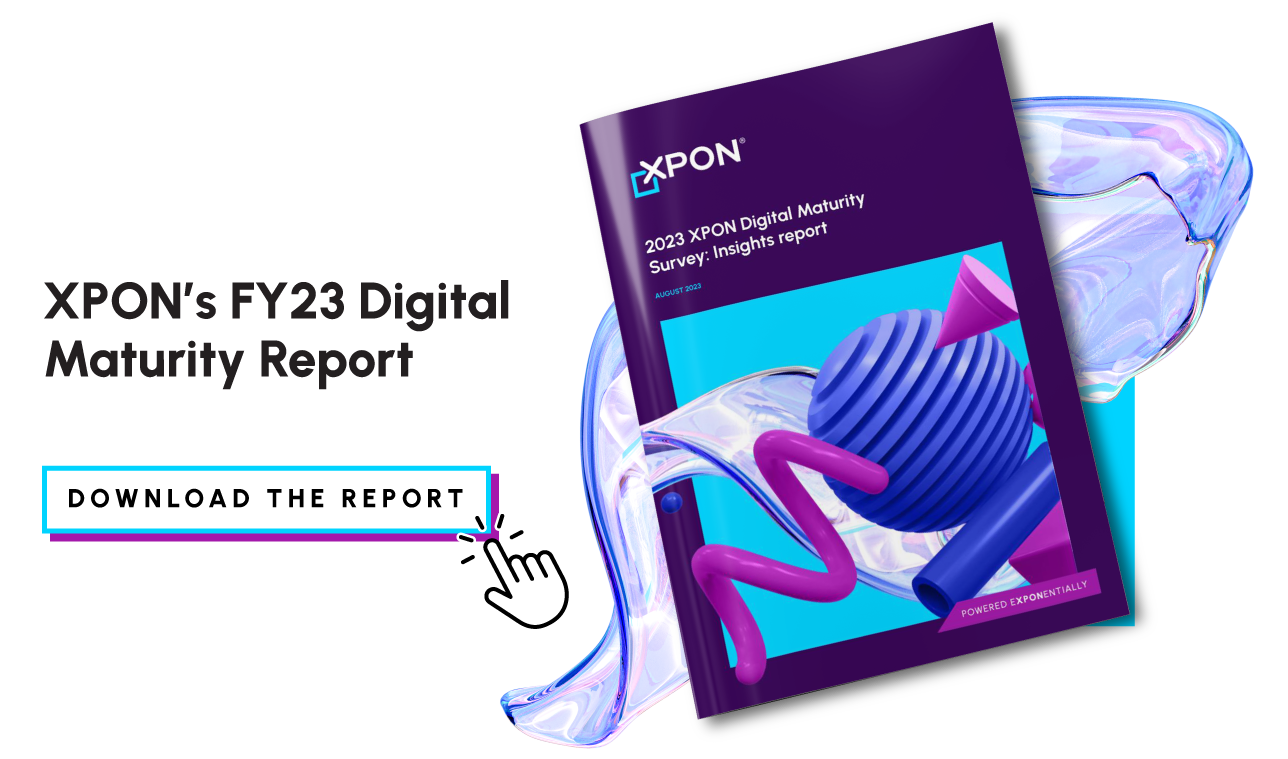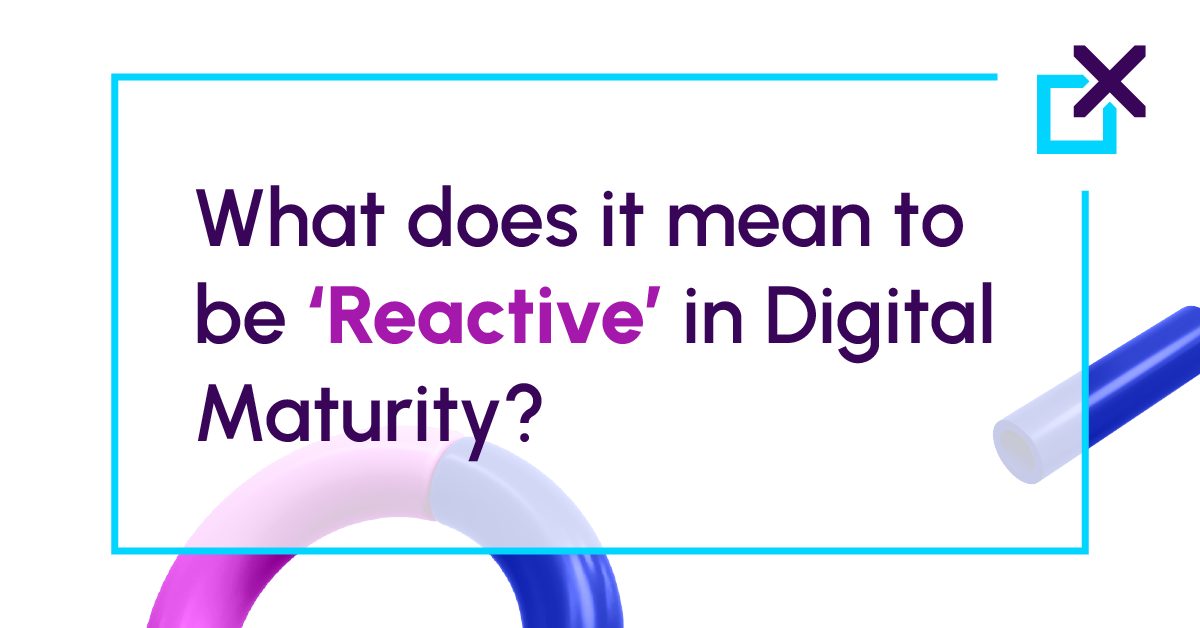
iiThe next stage moving on from Limited is Reactive, and below we’ll explain the characteristics of organisations in the Reactive Digital Maturity.
Turns out We’re Reactive – What does this mean?
You’ve taken the XPON Digital Maturity Survey, and the outcome indicates your organisation currently sits in the Reactive stage.
This puts you at the industry average, with 40% of other Digital Maturity Assessment respondents coming in at this stage. This result is a reflection of more businesses recognising the importance of an optimised and personalised digital experience for their customers (even if they’re still not quite sure how to get there – yet).
Reactive brands are tech-centric. This means they are now ‘reacting’ to changes in the digital landscape by starting to utilise technology, tools and owned data (compared to Limited’s reliance on 3rd party data). The move from an organisational to a technology focus sees the beginning of shared data across the business, although systems are yet to deliver a single view of the customer, and there’s limited integration with a CRM/offline data.
Similar to those in the Limited stage, there’s still work to do to safeguard against the inevitable future policy changes, and to prepare for a privacy-first, cookieless digital world. Further, the lack of true single-channel optimisation and testing makes it difficult for Reactive organisations to deliver an experience that serves a digital-savvy audience.
How do we move to the next stage?
A Reactive organisation or brand has plenty of opportunity to improve, and for most, it’s not out of reach. This includes looking at more streamlined operational processes, with an emphasis on efficient ways to connect systems to 1st party data. Aligned with this is continuing to place high importance on building technical capabilities within and across teams.
Expanding on from the work done by Limited brands, those in the Reactive stage might further refine their digital data strategy. Actions include identifying each touchpoint and interaction a customer has in their journey, and with these insights, making proactive improvements to customer experience and engagement.
To make the move into the two higher phases of Digital Maturity, buy-in and support from senior management and executives are critical, as collaboration and cross-functionality across business units become key to success.
As an organisation sitting in the Reactive stage of Digital Maturity, you’re right on the precipice of delivering truly customer-centric and profitable digital experiences. Our next article in the series will look at what happens once a brand reaches the Integrated phase.
Want to see where your organisation sits?
XPON’s Digital Maturity Survey delivers insights into your organisation’s capability across marketing and CX measurement, audience activation, and digital experience strategies.
To discover the Digital Maturity of your organisation take our survey here and for further information around XPON’s Digital Maturity Blueprint offering, please get in touch.
Once completed, you’ll receive a personalised copy of your Digital Maturity Report which will benchmark your organisation compared to your peers.

Download the report.
XPON’s Digital Maturity Insights Report reveals the latest trends, challenges, and opportunities extracted from surveying over 100 marketing, technology, and digital leaders across Australia and New Zealand.
Download the Insights Report to learn how similar businesses are performing and the key trends and challenges impacting their digital maturity.
